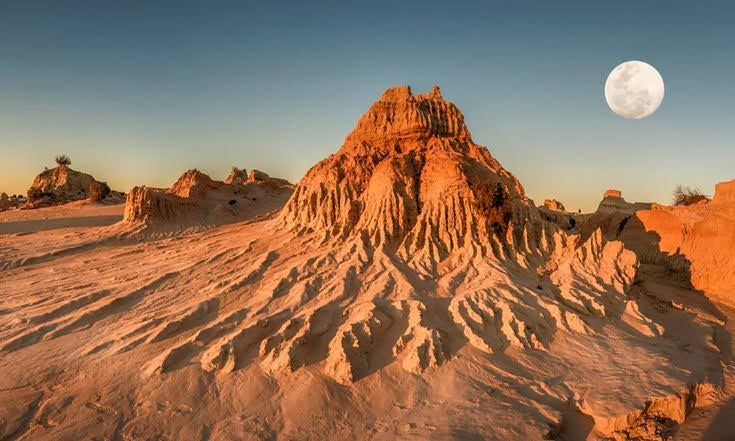
Savour the Flavours: Griffith Food and Wine Festival Experience in New South Wales
Dive into the Griffith Food and Wine Festival, where New South Wales’ Riverina region reveals its rich flavours through local wines and fresh produce. Perfect for culinary adventurers, the festival offers practical experiences that connect visitors to the land’s hard-earned delicacies.
Hydrate Throughout the Day
With springtime sun warming Griffin’s festival grounds, keeping water handy between wine tastings is essential to stay refreshed and focused.
Wear Supportive Footwear
Expect uneven dirt tracks and soft earth; sturdy shoes with good grip will keep you comfortable during long festival strolls and vineyard tours.
Block the Sun
Daily warming demands sunscreen, a wide-brimmed hat, and sunglasses to protect your skin and eyes during outdoor tastings and food demonstrations.
Pace Your Tastings
Alternate between wine samplings and food stalls to balance your palate and avoid overwhelming your senses, making each experience memorable.
Savour the Flavours: Griffith Food and Wine Festival Experience in New South Wales
Griffith, located in the heart of New South Wales’ Riverina region, throws open its doors every year for an event that celebrates the bounty of this fertile land: the Griffith Food and Wine Festival. This festival is more than just a showcase of local produce—it's a vibrant gathering where the land’s fiercely independent spirit meets the craft of dedicated winemakers and culinary artisans.
Set against the backdrop of sprawling vineyards and golden paddocks, the festival pulses with a practical joy. It stretches over several days, featuring tastings from local wineries, gourmet food stalls, cooking demonstrations, and talks that reveal the nuts and bolts of farming and winemaking in this vigorous, sun-baked landscape.
As you walk through the festival grounds, the scent of fresh earth mingled with grilled meats and herbs challenges your senses. The Riverina wine region, known for robust shiraz and varietals that push their own boundaries, offers tastings that challenge your palate to engage with the terroir itself. This isn’t a passive sip; it’s an invitation to understand how the mellow climate, soil, and irrigation shape the flavour of each vintage.
Planning your visit requires a bit of strategy. The festival typically runs in early spring (September to October), when the weather is mild and the vineyards awaken from winter’s rest. Early mornings offer cooler air, perfect for wandering and tasting, while afternoons may demand a hat and hydrated attention as the Australian sun pushes down. Comfortable footwear is crucial; festival grounds stretch across uneven terrain and open fields that can turn dusty or boggy depending on recent weather.
Beyond the immediate charm of wine and cuisine, Griffith itself invites practical exploration. Several cellar doors offer tours that go beyond baseline tastings—think barrel room walks and meet-the-maker experiences. For food lovers, local produce markets operate year-round nearby, providing a snapshot of seasonal crops harvested from the surrounding farms.
Whether you are a seasoned gastronome or a curious traveller seeking authentic local flavours, the Griffith Food and Wine Festival provides both inspiration and practical engagement. It’s not just about enjoyment but understanding the land’s demands and rewards, making each glass and plate earned through earth, sweat, and passion.
Nearby Trips
All Adventures
Boat Charters
Water Activities
Adventures near Griffith, New South Wales
Discover the unique and memorable adventures that make Griffith, New South Wales special.
Frequently Asked Questions
When does the Griffith Food and Wine Festival usually take place?
The festival is generally held in early spring, around September or October, taking advantage of mild weather and the start of the new growing season.
Are there choices for non-wine drinkers at the festival?
Yes, the festival includes a vast selection of craft beers, fresh juices, and local gourmet foods, making it welcoming for all tastes.
Is the festival suitable for families or just adults?
While wine tastings are focused on adults, the festival often features family-friendly activities such as cooking demos and markets, creating an inclusive atmosphere.
Can visitors purchase wines directly from the producers during the festival?
Yes, many wineries offer bottles for sale at the festival, giving visitors the chance to take home their favourites straight from the source.
What are some lesser-known aspects of the festival?
Beyond tastings, the festival highlights local agricultural techniques and sustainability efforts, with workshops and talks that dive into the practical side of food and wine production.
Is there public transportation available to the festival?
Most visitors drive or arrange local shuttles as public transit options are limited in Griffith, so planning transport in advance is recommended.
Recommended Gear
Comfortable walking shoes
Essential for navigating festival grounds with mixed surfaces including dirt, grass, and gravel paths.
Water bottle
Hydration is critical during warm days spent outdoors tasting wines and exploring vendors.
Sunscreen
Protects skin from extended exposure to the Australian sun throughout the festival day.
Wide-brimmed hat
Provides shade and reduces sun exposure during midday hours, making the experience more comfortable.
Local Insights
Hidden Gems
- "The Katunga Pines lookout offers panoramic views of the vineyards stretching into the horizon, perfect for a quiet moment away from the festival hustle."
- "Small boutique olive oil producers near Griffith provide tastings and tours that pair well with the festival's food offerings."
Wildlife
- "Keep an eye out for native parrots and cockatoos that frequently fly over the vineyards, their calls punctuating the open skies."
- "Kangaroos are common at dawn and dusk near the outskirts, adding a wild contrast to the cultivated landscape."
History
"Griffith's roots as a planned irrigation settlement give the festival a unique backdrop, celebrating both modern innovations and traditional farming methods that shaped the region."
